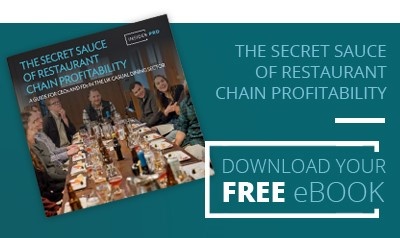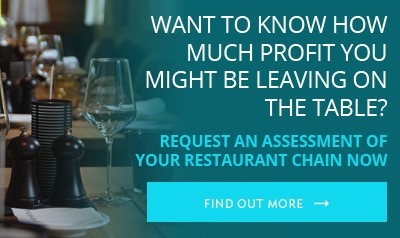Fast table turnover is a key topic for both customers and restaurant managers in the casual dining sector. Diners are demanding fast, good quality food delivered in a way that suits their needs at that time - be that a family get together, a party atmosphere, an intimate dining experience, dinner with cocktails, a particular style of cooking.... the choice is huge. And those who don't deliver a unique experience AND serve up good food, fast are losing market share.
In the UK, the average restaurant table turnover rate is 50-80 minutes and interestingly, the fastest growing casual dining chains are the ones that are achieving the sub-60 minute mark.
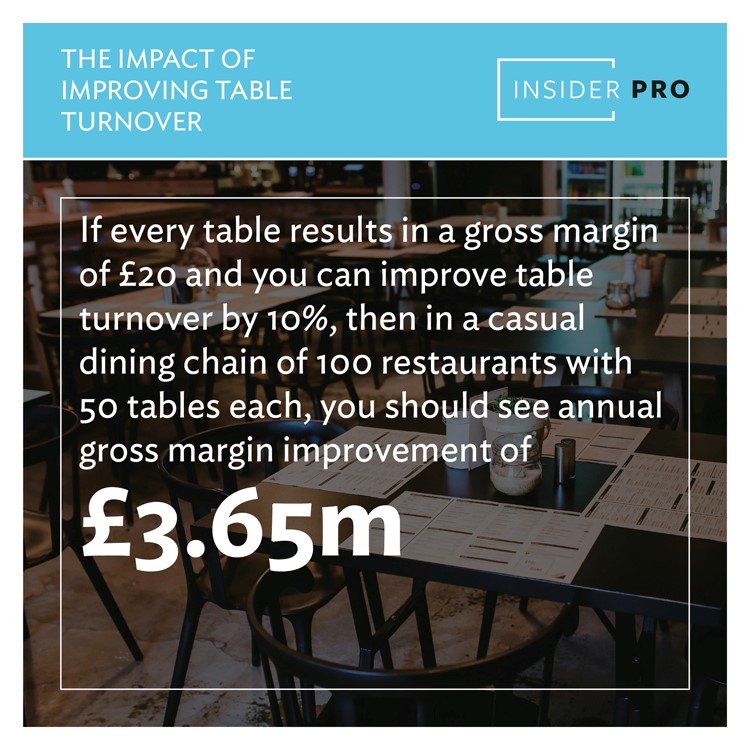
So how do you achieve that level of efficiency, without compromising on the customer experience?
In short, this level of restaurant efficiency demands scrutiny of every element in the process from the moment the customer walks through the door to the moment they leave - in the restaurant, in the kitchen and in the bar.
1. Table availability
First and foremost, it's important that tables are flexible to meet demands quickly. Tables that can be joined to form different combinations are preferable. Just ensure that staff, understand any space-planning limitations.
If a restaurant has to turn away people frequently, we recommend reviewing the use that is made of the entire building. We worked with one chain who had a large bar area in each restaurant but frequently ran out of tables. We observed that most people didn't use the bar at all, preferring to be seated at a table immediately, or move on to another restaurant instead.
Changing the configuration to accommodate two more tables meant that this busy restaurant stopped losing trade during busy periods.
2. Drinks delivery
If the first drink takes ages to arrive, then the customer expectation is that everything else will take time too. The impact might be for them to avoid ordering further drinks or miss out on starters, not to mention souring overall customer satisfaction.
So, what we would advise any restaurant is to "set the bar high" (pardon the pun!) by offering, and serving, drinks as quickly as possible. The aim is to sell more drinks at the same time as maintaining or reducing average dining times.
That might mean reviewing several things. For example:
- using mobile EPOS systems to order drinks directly from the table
- if cocktails are not core to the brand, consider rationalising an extensive cocktail menu to speed up the process
- reducing the variety of types of glasses used for each drink to avoid shortages during busy times
- ensure that the bar is set out to make everything more accessible to the staff
- having a regime of restocking bar supplies so that the bar staff focus on serving
- ask staff what holds them back and how they think the job could be done faster
The benefit of this, of course, is that more people will be ready to order further drinks to enjoy with or after their food. And that in turn means drinks per head (one of my favourite restaurant KPIs) will increase.
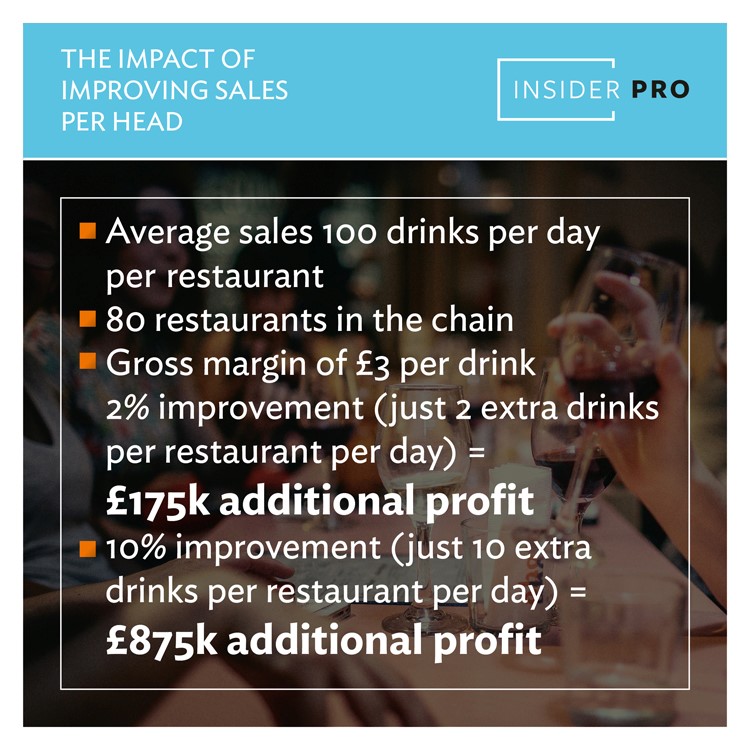
3. Kitchen efficiency
It stands to reason that anyone wanting to serve good food fast has to be quick in the kitchen. There is a lot to review here - the choices on the menu, procurement and storage options on ingredients, kitchen layout, and staff management.
Here's a really simple example:
In one restaurant, we looked at the way food allergies and intolerances are managed. We advised buying wheat-based products from different suppliers to their gluten-free alternatives. There was no cost difference, but the impact on efficiency was noticeable. Being from a different supplier, the gluten-free options arrived in completely separate deliveries to the wheat-based ones. They were branded differently and very easy to identify and store. This reduced handling time and potential errors in the kitchen.
There is a lot more on this subject in The Secret Sauce of Restaurant Chain Profitability - a comprehensive but easy to absorb eBook about cutting costs and improving revenue.
4. Front of house efficiency
Seating diners, taking orders, serving food and drinks, delivering the bill and taking payment, plus clearing tables ready to be used are the typical measurement points for front of house. Making these aspects efficient means that diners can have a relaxed experience, spending less time waiting and more time eating (and spending!).
There are various ways to improve this, but all require good staff engagement.
Much of a restaurant manager's time is spent on staff issues, yet we've observed that many fail to set appropriate restaurant KPIs that drive the desired results.
We've seen restaurant managers informing staff that they should be aiming for an average sale of £x per diner. But on an individual basis, staff can't see how well they are contributing to that number throughout the day.
Instead, we recommend communicating targets with staff using our UMAMI principles and using very specific directions like:
“Every day, you should sell at least 1 bottle of mineral water instead of tap water.”
“Offer drinks as soon as people arrive, before each course and at the end of the meal.”
“This is how to recommend the best drinks and sides to go with each dish on the menu.”
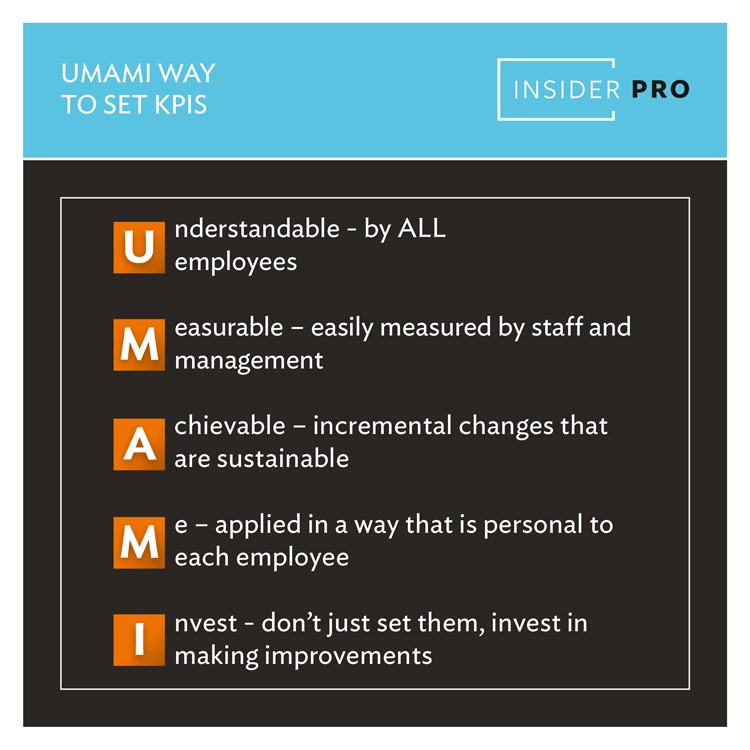
Based on years of experience as restaurant consultants, we've covered all of this and much, much more in The Secret Sauce of Restaurant Chain Profitability - a 60 page guide to the issues faced in the UK Casual Dining sector and 18 practical ways improve restaurant profit.
